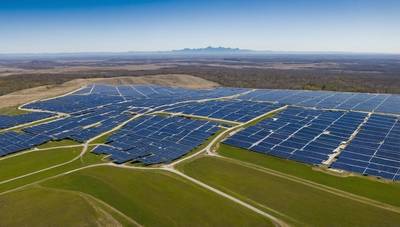EIA: Solar could account for 50% of the new US electricity generated this year
The Energy Information Administration reported on Wednesday that developers are on course to add 33 gigawatts (GW) of solar power this year in the U.S., which is about half the new electricity generation capacity planned for 2025.
The EIA said that if the plans were realized, the additions of large-scale solar energy in the U.S. could reach a new record. It based its analyses on a survey conducted with developers. The EIA also predicted that new battery storage systems, which store electricity from solar farms or other sources of energy, could reach a record yearly in 2025.
The EIA reported that the remainder of the capacity was added by wind and natural gas power stations.
Why it's important
Solar energy doesn't produce global warming emission. This makes solar energy a key component of plans to decarbonize the U.S. while meeting record-high demand for electricity brought about by Big Tech, and other expanding industries.
The administration of Donald Trump will remove many of the financial incentives provided by the federal government that have propelled solar energy development over the past several years. This will add uncertainty to the future development of this technology.
TEXAS SOLAR STANDOUT
Texas, the state that last year overtook California in terms of large-scale solar energy, is responsible for more than one quarter of all solar power produced by 2025.
The Lone Star State is planning to add another 9,7 gigawatts in solar capacity for the remainder of the year. This represents nearly half of the total solar power planned for the United States over this time frame. The sunny climate of Texas, the availability of large areas of land and rapidly-increasing demand for electricity have all contributed to solar energy development. (Reporting and editing by Barbara Lewis; Laila Kearney)
(source: Reuters)





